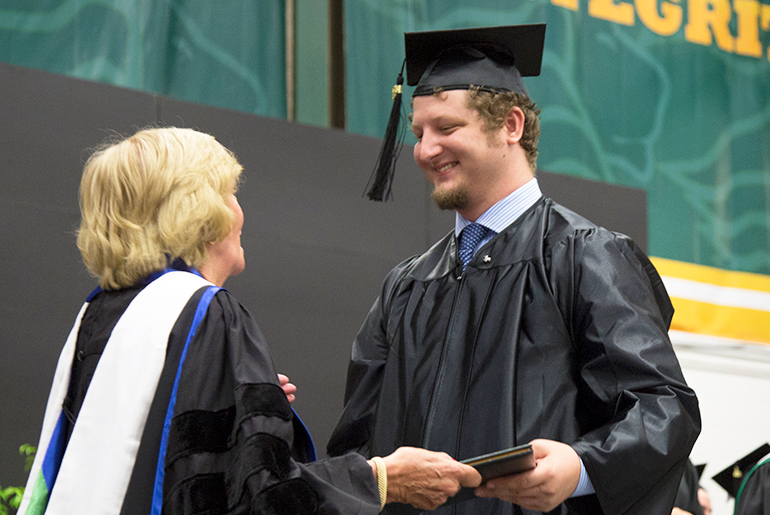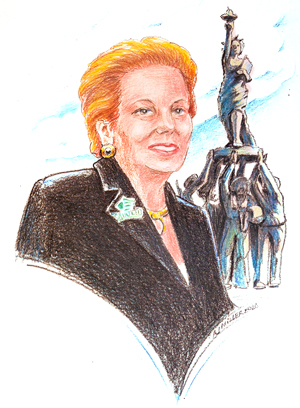
Opportunities at Saint Leo led to a hall of fame coaching career for Pete Mulry ’67.
If you walk around Tampa with Pete Mulry ’67, chances are you’ll hear someone shout, “Hey, coach!”
With 15 years of coaching experience, four state championships, a national championship, a series of best-selling children’s books, and his name permanently enshrined into four halls of fame, Mulry is known by many in the community and has become a Tampa Bay-area legend in his own right.
If you ask Mulry where he developed the skills needed to become a motivational leader, he will tell you that his journey started as a member of the “pioneer” class at Saint Leo College in 1963.
As part of the first class of students to attend Saint Leo College, Mulry and his classmates laid the foundation for all that Saint Leo University offers today.
Like many of his peers, Mulry left home for the first time to attend Saint Leo. Initially from Rutherford, NJ, Mulry experienced culture shock when he traded his daily view of the New York City skyline for the country roads of Pasco County.
Mulry recalls seeing Abbot Marion Bowman riding around campus in overalls on a tractor — a sight far different than the more urban environment in which he was raised.
“I was born in New Jersey, but I grew up at Saint Leo,” Mulry said, describing his transformational experience at Saint Leo College.
As an only child, Mulry had to adjust to the life of a college student. He quickly adapted to the new environment and became involved with student government, his fraternity (Phi Theta Chi), and most importantly to him — baseball.
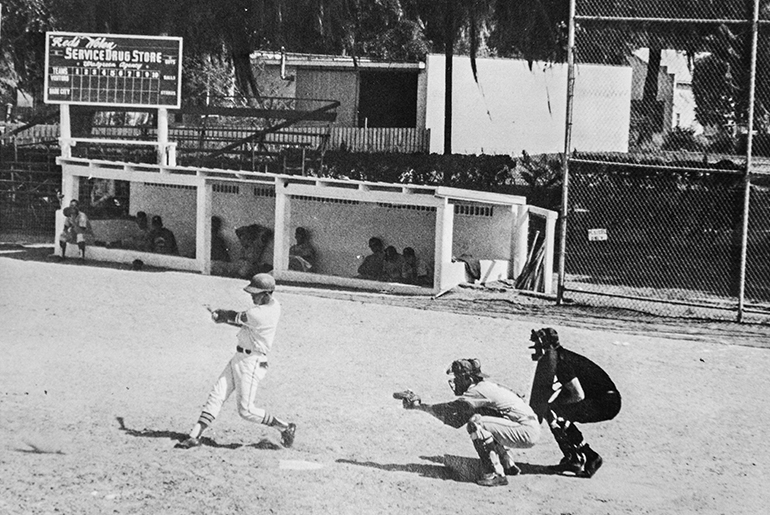
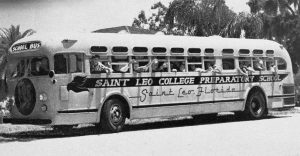
For the first two years of Saint Leo College’s baseball program, student-athletes had to take a bus to the fields near the San Antonio Lumber Co. to practice.
While the resources and equipment at their disposal were modest, they made the most out of their experience through the relationships they built with their faculty, staff, and peers.
Coach Bobby Sullivan, the first-baseball coach at Saint Leo College, cared deeply for each of his athletes.
“He’s a good Catholic who led with discipline and love,” Mulry said about Sullivan, who he credits as one of the most influential people who taught him how to lead.
Sullivan appointed Mulry, who played shortstop, as the first captain of the Saint Leo College baseball team.
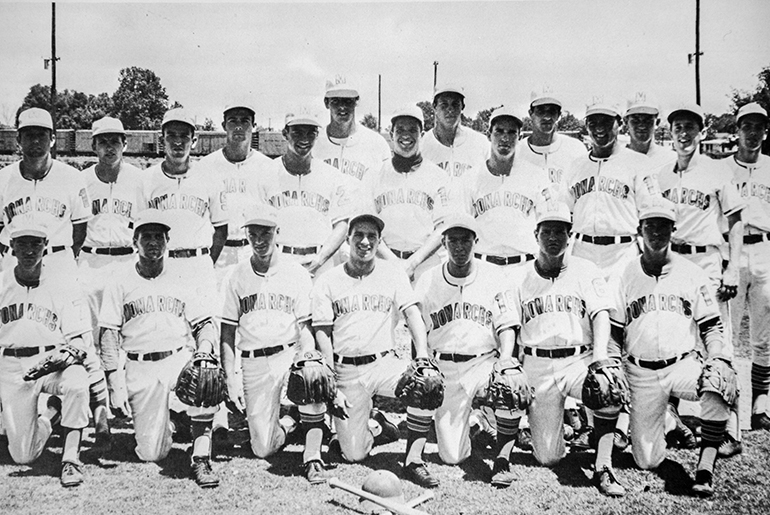
During his senior year, Mulry’s mentor Sullivan left Saint Leo and was replaced by coach Norm Kaye. The styles of the two coaches contrasted greatly.
Life presented Mulry with another “curveball” when an injury derailed his final season and forced him to remain in the dugout. While others may have given up and quit the team after an injury, Mulry used the experience as an opportunity.
“You always learn more on a rainy day,” Mulry said about his approach to dealing with the setback. Kaye recognized Mulry as the team’s leader, and the players trusted him, allowing him to be the “co-manager” of the team.
Fred Cambria ’70, Saint Leo College’s first Major League Baseball player, credits Mulry’s leadership as instrumental in his development.
“Pete helped me build confidence and inspired me to succeed,” Cambria said. “His dedication to the student-athlete, on and off the field, has made him Mr. Baseball in the Tampa Bay area.”
Mulry graduated in the spring of 1967 with a degree in social studies education, which was one of the degree options offered at the time. His unique experience at Saint Leo prepared him for the next chapter of his life — coaching.
While still a young man himself, Mulry began his coaching career in 1968 at Tampa Catholic High School. At 21 years of age, he led his team to a state championship victory.
From 1968 to 1979, Mulry built one of the nation’s premier high school baseball programs, winning four state championships and one national championship, earning an impressive record of 329 wins and only 29 losses. In 1977, he was runner-up for the national coach of the year award.
From 1979 to 1983, Mulry went on to coach at the University of Tampa. He described playing against Saint Leo as a “weird experience.” He had to ask himself, “am I on the wrong team?”
With the experience he gained at Saint Leo, Mulry began his successful coaching and teaching career at Tampa Catholic High School.
“Bob Sullivan’s influence stuck with me every single day,” Mulry said, reflecting on how his experience at Saint Leo helped him in his coaching career.
Mulry’s decorated coaching career earned him a spot in the Hall of Fame at Saint Leo University, Tampa Catholic High School, St. Mary’s Catholic School (NJ), and the Tampa Bay Sports Club. In 2018, the Tampa Bay Times listed him as one of the 50 top coaches in Tampa Bay-area history.
After retiring from coaching in 1983, Mulry embarked on a second career as a real estate agent in the panhandle of Florida. Leadership and winning remained fundamental to his mission and essential to his success.
Now, Mulry uses literature to inspire, lead, and motivate. In 2011, he authored, Conversations in the 7th Inning of My Life, which touches on life skills learned through sports.
Through the work of the Peter J. Mulry Foundation, Mulry provides life skills and training to deserving young people in the Tampa Bay area. He has authored 11 baseball-themed children’s books that focus on teaching fundamental values through diverse characters, several of which have made it to Amazon’s best-seller list in their respective categories.
“Watching what Coach Mulry does within the greater Tampa Bay area is truly inspirational,” said Lori Waechter, a foundation board member. “His leadership and ability to bring people together reflect the core values imprinted upon him during his time at Saint Leo University.
I’ve had the great privilege of working with him and learning firsthand the importance of teamwork and the value of investing in the young people of our community.”
After Pete Mulry retired from coaching, he created the Peter J. Mulry Foundation to help Tampa area youths. In 2022, he received Saint Leo Alumni Association’s Distinguished Alumnus Award and celebrated with members of his foundation.
Join the James J. Horgan Heritage Society
To support the next generation of Saint Leo students, Pete Mulry has made a generous commitment of $500,000 to fund scholarships through a gift in his estate plan. You can join Mulry and others who have joined the James J. Horgan Heritage Society, honoring individuals who have made planned gifts to Saint Leo University in their estate plans. To learn more, please contact the University Advancement office at (352) 588-8450.
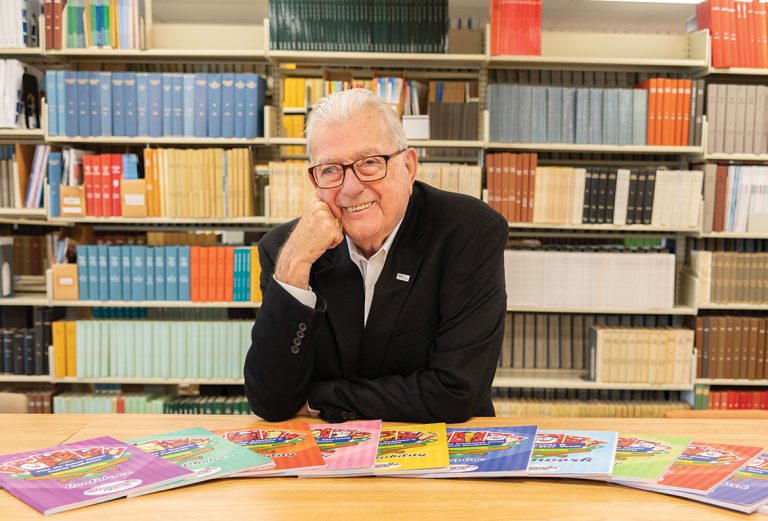
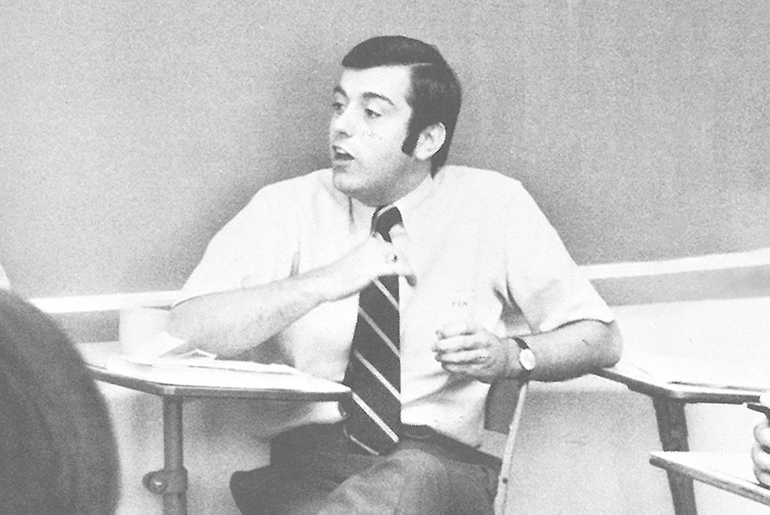

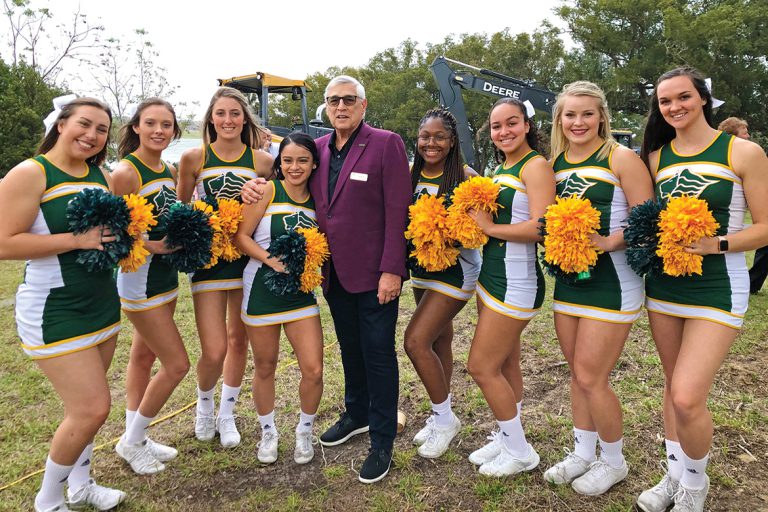
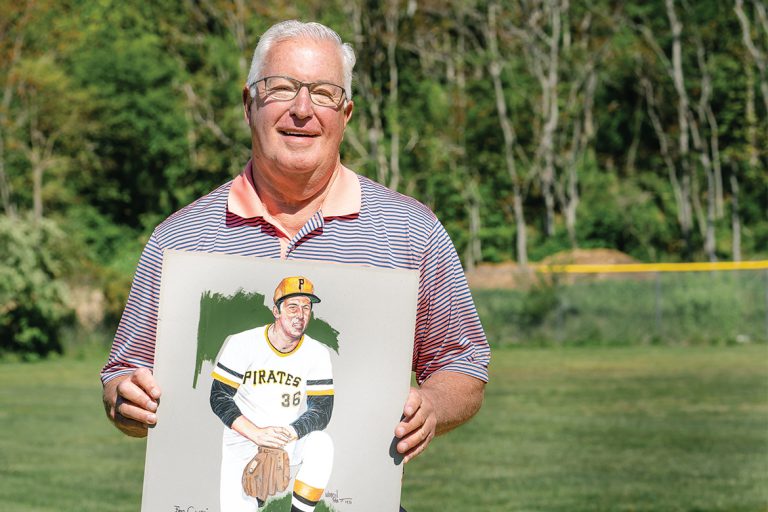
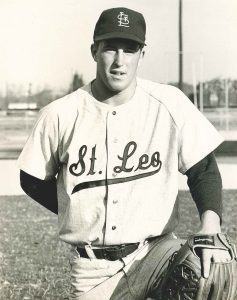
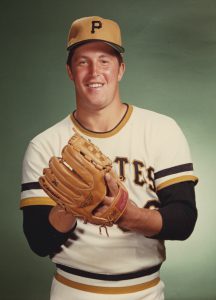 Cambria became the first Saint Leo athlete to be drafted in a professional sports league when the Pittsburgh Pirates selected him in the third round of the 1969 draft.
Cambria became the first Saint Leo athlete to be drafted in a professional sports league when the Pittsburgh Pirates selected him in the third round of the 1969 draft.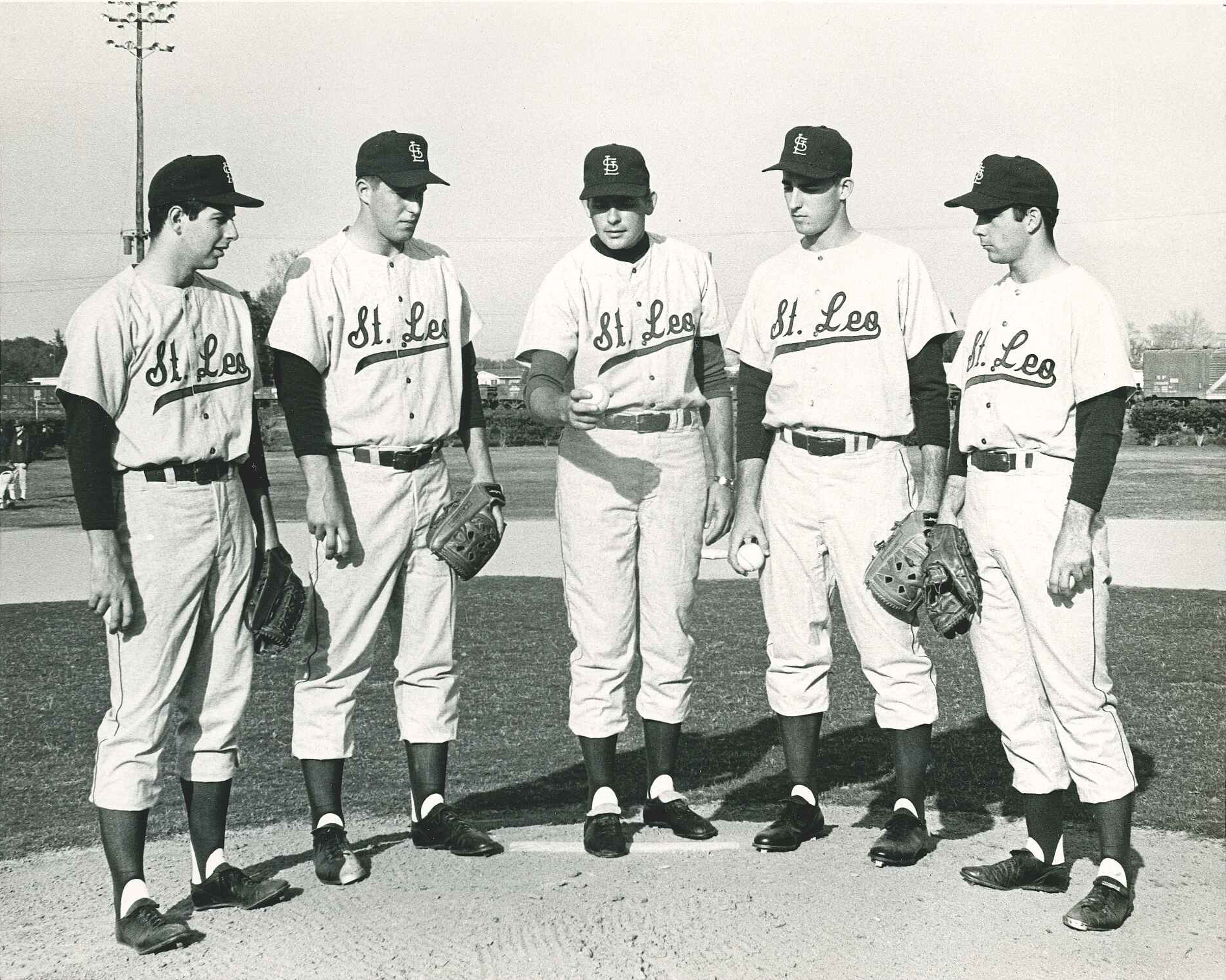

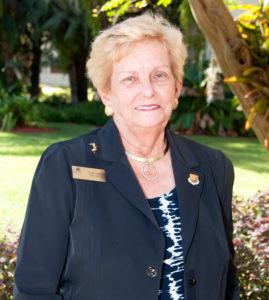 From serving as the CEO of her family business to leading philanthropic efforts, Trustee Emerita Virginia “Ginger” Judge attributes much of her success to taking bold action and saying “yes” in times when others have said “no.”
From serving as the CEO of her family business to leading philanthropic efforts, Trustee Emerita Virginia “Ginger” Judge attributes much of her success to taking bold action and saying “yes” in times when others have said “no.”